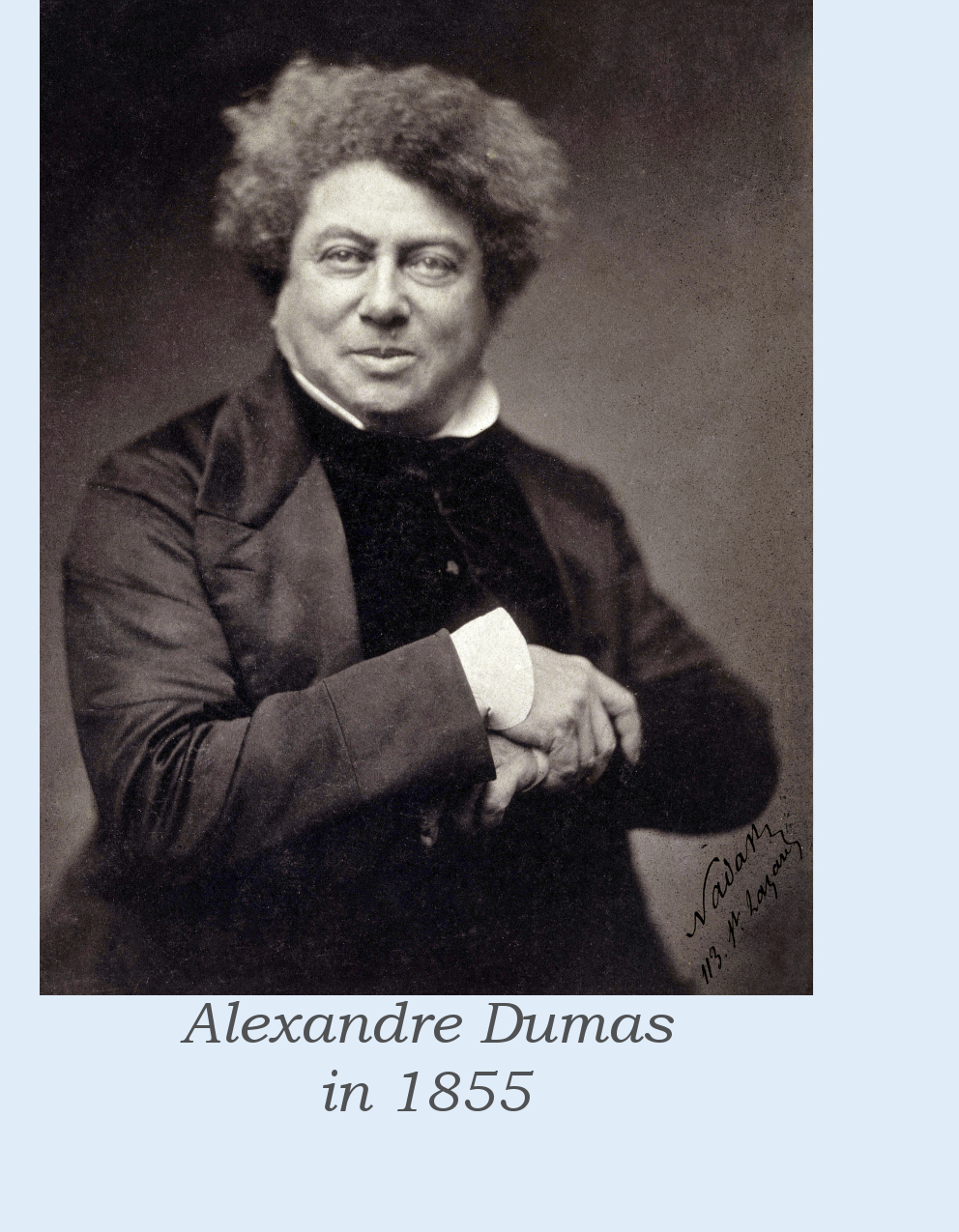
Alexandre Dumas père
 Biography
BiographyAlexandre Dumas (July 24, 1802–December 5, 1870), born Dumas Davy de la Pailleterie, also known as Alexandre Dumas père (where père is French for father, thus the elder/senior), was a French writer. His works having been translated into many languages, he is one of the most widely read French authors and his novels have been adapted since the early twentieth century into nearly 200 films. Many of his adventure novels were originally published as serials, including The Count of Monte Cristo, The Three Musketeers, Twenty Years After, and The Vicomte of Bragelonne: Ten Years Later.
Dumas was born in Villers-Cotterêts in the department of Aisne, in Picardy, France. He had two older sisters, Marie-Alexandrine (born 1794) and Louise-Alexandrine (1796–1797). Their parents were Marie-Louise Élisabeth Labouret, the daughter of an innkeeper, and Thomas-Alexandre Dumas who had been born in the French colony of Saint-Domingue (now Haiti), the mixed-race, natural son of the marquis Alexandre Antoine Davy de la Pailleterie, a French nobleman and général commissaire in the artillery of the colony, and Marie-Cessette Dumas, an enslaved woman of Afro-Caribbean ancestry. At the time of Thomas-Alexandre’s birth his father was impoverished. Brought as a boy to France by his father and legally freed there, Thomas-Alexandre Dumas Davy was educated in a military school and joined the army as a young man. As an adult, Thomas-Alexandre used his mother’s name, Dumas, after a break with his father, and was promoted to general by the age of 31, the first soldier of Afro-Antilles origin to reach that rank in the French army.
His father’s aristocratic rank helped young Alexandre acquire work with Louis-Philippe, Duke of Orléans, then as a writer, a career which led to early success. Prolific in several genres, Dumas began his career by writing plays which were successfully produced from the first. He also wrote numerous magazine articles and travel books; his published works totalling 100,000 pages. In the 1840s Dumas founded the Théâtre Historique in Paris. Decades later, after the election of Louis-Napoléon Bonaparte in 1851, Dumas fell from favour and left France for Belgium where he stayed for several years, then moved to Russia for a few years before going to Italy. In 1861, he founded and published the newspaper L'Indépendent, which supported Italian unification, before returning to Paris in 1864.
Though married, Dumas had numerous affairs (allegedly as many as 40). He was known to have had at least four illegitimate children, although twentieth-century scholars believe it was seven. He acknowledged and assisted his son, Alexandre Dumas, to become a successful novelist and playwright. They are known as Alexandre Dumas père (father) and Alexandre Dumas fils (son). Among his affairs, in 1866 Dumas had one with Adah Isaacs Menken, an American actress then less than half his age and at the height of her career. The English playwright Watts Phillips, who knew Dumas in his later life, described him as “the most generous, large-hearted being in the world. He also was the most delightfully amusing and egotistical creature on the face of the earth. His tongue was like a windmill—once set in motion, you never knew when he would stop, especially if the theme was himself.”
Bibliography
Captain Paul (1838)
Captain Pamphile (1839)
Othon the Archer (1840)
The Fencing Master (1840)
Georges (1843)
Castle Eppstein; The Spectre Mother (1843)
Amaury (1843)
The Corsican Brothers (1844)
The Three Musketeers (1844)
The Nutcracker (1844, basis for Tchaikovsky’s ballet)
Twenty Years After (1845)
La Reine Margot (1845)
La Dame de Monsoreau (1846)
The Count of Monte Cristo (1844–46)
The Forty-Five Guardsmen (1847)
The Vicomte de Bragelonne (1847)
The Pale Lady (1849)
The Black Tulip (1850)
Olympe de Cleves (1851–52)
Catherine Blum (1853–54)
The Mohicans of Paris (1854)
The Wolf Leader (1857)
The Last Vendee, or the She-Wolves of Machecoul (1859)
La Sanfelice (1864)
The Prince of Thieves (1872)
Robin Hood the Outlaw (1873)
The Bride of Monte-Cristo: A Sequel to “The Count of Monte-Cristo” (June 24, 1884)
Other links
Wikipedia